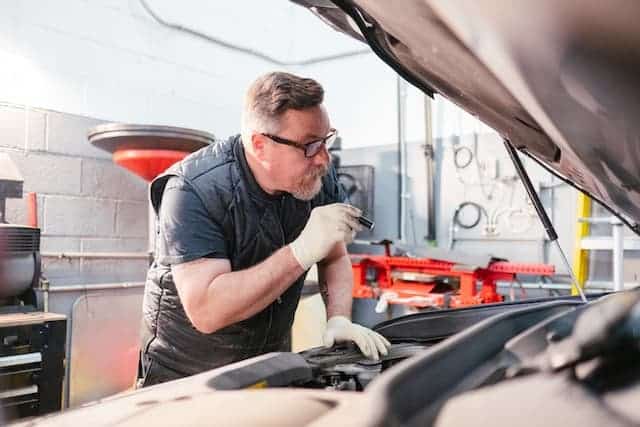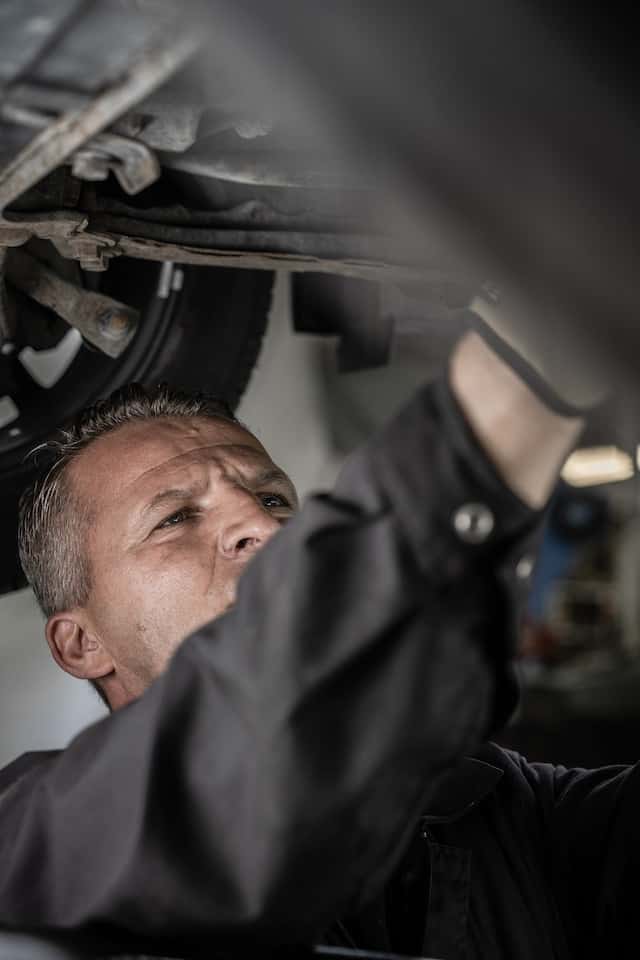
A vehicle’s heating system is crucial for maintaining a comfortable cabin temperature, especially during cold weather. It also helps defrost the windshield, ensuring clear visibility and safe driving. One common issue drivers face is that their vehicle’s heat only works when the car is in motion. In this article, we’ll explore the possible causes of this problem and suggest solutions to get your heat working consistently.
Heat Only Works When Driving: Possible Causes
Low coolant levels
Low coolant levels can affect your vehicle’s heating system, as the coolant is responsible for transferring heat from the engine to the heater core. To check coolant levels, locate the coolant reservoir under the hood and ensure it is filled to the appropriate level.
Malfunctioning thermostat
The thermostat regulates the flow of coolant through the engine and heating system. A faulty thermostat may not open properly, restricting coolant flow and causing the heat to only work when the car is in motion. Symptoms of a malfunctioning thermostat include fluctuating temperature readings and engine overheating.
Clogged heater core
The heater core is responsible for transferring heat from the engine coolant to the cabin. A clogged heater core can limit heat transfer, resulting in poor heating performance. Signs of a clogged heater core include reduced airflow from the vents, a sweet smell in the cabin, and foggy windows.
Faulty water pump
The water pump circulates coolant through the engine and heating system. A failing water pump may not circulate coolant effectively, causing the heat to only work when the car is moving. Symptoms of a faulty water pump include coolant leaks, engine overheating, and unusual noises from the pump.
Damaged or worn-out heater control valve
The heater control valve regulates the flow of coolant to the heater core. A damaged or worn-out valve can limit coolant flow, causing heat to work only when driving. Indications of a damaged heater control valve include inconsistent cabin temperatures and poor heating performance.
Heat Only Works When Driving: Solutions and Repairs
Checking and refilling coolant levels
If your coolant level is low, refill it to the appropriate level using the correct coolant type for your vehicle. Regularly monitor coolant levels to ensure they remain within the recommended range.

Replacing the thermostat
If you suspect a malfunctioning thermostat, consult a professional mechanic for a proper diagnosis and replacement.
Flushing or replacing the heater core
A clogged heater core can be flushed to remove debris and restore heat transfer. If flushing is not effective or the heater core is damaged, it may need to be replaced by a qualified mechanic.
Repairing or replacing the water pump
If the water pump is the culprit, have a mechanic inspect it for damage and recommend the necessary repairs or replacement.
Fixing or replacing the heater control valve
A faulty heater control valve can be repaired or replaced by a professional mechanic to restore proper coolant flow and heating performance.
Heat Only Works When Driving : Preventive Maintenance

Heat Only Works When Driving : Regular maintenance can help prevent heating issues and prolong the life of your vehicle’s heating system.
- Perform regular coolant flushes and refills to maintain optimal coolant levels and prevent debris buildup.
- Inspect the thermostat periodically to ensure proper functionality.
- Keep the heater core clean by flushing it as part of routine maintenance.
- Check the water pump for wear and tear and replace it as needed.
- Monitor the heater control valve for proper operation and replace it if necessary.
If your vehicle’s heat only works when driving, addressing the issue promptly can prevent further damage to your heating system and ensure a comfortable driving experience. Whether it’s low coolant levels, a malfunctioning thermostat, or another issue, consult a professional mechanic to diagnose the problem and recommend the appropriate repairs.
Heat Only Works When Driving: FAQ

Q: Why does my car’s heat only work when driving?
A: Various issues can cause your heat to only work when driving, including low coolant levels, a malfunctioning thermostat, a clogged heater core, a faulty water pump, or a damaged heater control valve.
Q: How can I check if my car has low coolant levels?
A: Locate the coolant reservoir under the hood of your car and check if it’s filled to the appropriate level. If it’s low, refill it using the correct coolant type for your vehicle.
Q: What are the symptoms of a faulty thermostat?
A: Symptoms of a malfunctioning thermostat include fluctuating temperature readings, poor heating performance, and engine overheating.
Q: How do I know if my heater core is clogged?
A: Signs of a clogged heater core include reduced airflow from the vents, a sweet smell in the cabin, foggy windows, and poor heating performance.
Q: Can a failing water pump affect my car’s heating system?
A: Yes, a faulty water pump may not circulate coolant effectively, causing the heat to only work when the car is moving. Symptoms include coolant leaks, engine overheating, and unusual noises from the pump.
Q: How can I fix a damaged or worn-out heater control valve?
A: Consult a professional mechanic to inspect your heater control valve, diagnose the issue, and recommend the appropriate repairs or replacement.
Q: What preventive maintenance can I do to avoid heating system issues?
A: Perform regular coolant flushes and refills, inspect the thermostat, keep the heater core clean, check the water pump for wear and tear, and monitor the heater control valve for proper operation.
Q: Should I consult a mechanic if my heat only works when driving?
A: Yes, it’s essential to consult a professional mechanic to diagnose the problem and recommend the appropriate repairs, ensuring a comfortable driving experience and preventing further damage to your heating system.
Q: How often should I flush and refill my coolant?
A: The recommended frequency for a coolant flush and refill varies depending on the vehicle make and model. Consult your owner’s manual for specific guidelines, but generally, it is advised to perform a coolant flush every 30,000 to 50,000 miles or every 2 to 5 years.
Q: Can a clogged heater core lead to engine overheating?
A: While a clogged heater core primarily affects the heating system, it can also lead to increased engine temperature due to reduced coolant circulation. If you suspect a clogged heater core, it’s essential to address the issue promptly.
Q: How much does it cost to repair or replace a faulty heating system component?
A: The cost of repairing or replacing heating system components varies depending on the specific part, labor costs, and your vehicle’s make and model. Consult a mechanic for a detailed estimate based on your situation.
Q: Can I perform heating system repairs myself?
A: While some heating system repairs can be performed by a knowledgeable DIY enthusiast, it’s generally recommended to consult a professional mechanic for a proper diagnosis and repair. This ensures that the issue is accurately identified and resolved, preventing further damage to your vehicle.
Q: Can ignoring heating system issues lead to more severe problems?
A: Yes, neglecting heating system problems can cause more significant issues in the long run, such as engine overheating or damage to other components. It’s essential to address any heating system concerns promptly to maintain a comfortable driving experience and prevent costly repairs.
Q: How can I ensure my car’s heating system is working efficiently?
A: Regular maintenance, including coolant flushes and refills, thermostat inspections, heater core cleanings, water pump checks, and heater control valve monitoring, can help maintain your car’s heating system efficiency and prolong its life.
Q: How can I improve my car’s heating performance during extremely cold weather?
A: In extreme cold conditions, you can improve your vehicle’s heating performance by allowing the engine to warm up before driving, using a windshield cover to minimize frost, and ensuring that the heating system components are in good working condition.
Q: Can a dirty cabin air filter affect my car’s heating system?
A: A dirty cabin air filter can reduce airflow from the vents, affecting the overall efficiency of your car’s heating system. It’s essential to replace the cabin air filter regularly, as recommended by the vehicle manufacturer.
Q: What type of coolant should I use for my vehicle?
A: Use the specific coolant type recommended by your vehicle’s manufacturer, which can be found in the owner’s manual. Different vehicles require different coolant types, so it’s crucial to use the correct one to prevent damage to your engine and heating system.
Q: How long does it typically take for a car’s heating system to warm up?
A: The time required for a car’s heating system to warm up depends on various factors, including the engine’s efficiency, ambient temperature, and the condition of the heating system components. Generally, it takes a few minutes for the engine to warm up and provide sufficient heat inside the cabin.
Q: Can a weak car battery affect my heating system?
A: A weak car battery can affect the overall electrical system of your vehicle, including the heating system. If you experience heating system issues along with other electrical problems, it might be worth having your battery checked.
Q: Is it possible for a leaking heater core to cause a coolant smell inside the cabin?
A: Yes, a leaking heater core can cause a sweet, coolant-like smell inside the cabin. If you notice this smell along with poor heating performance or foggy windows, it’s essential to have your heater core inspected and repaired or replaced as needed.


